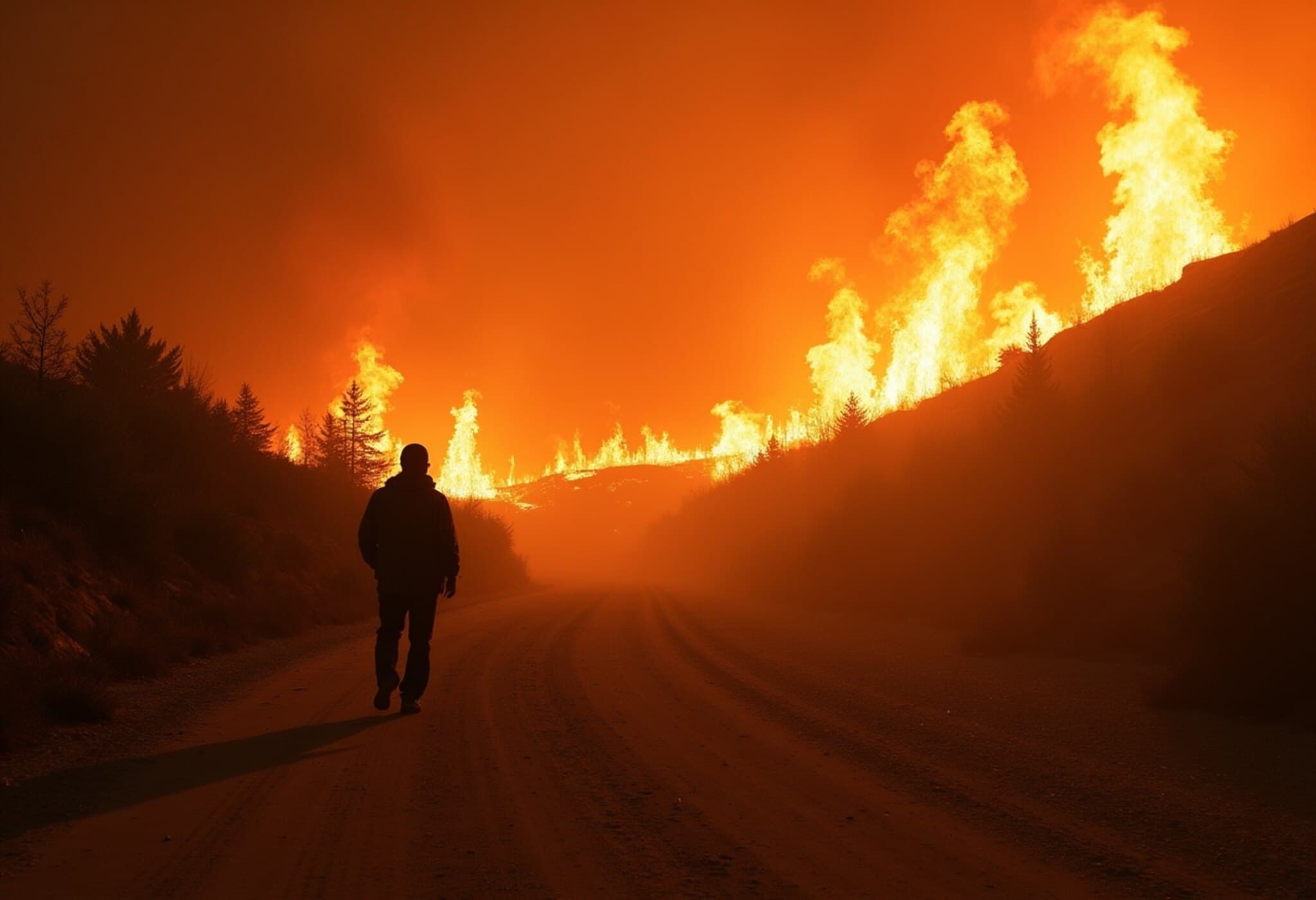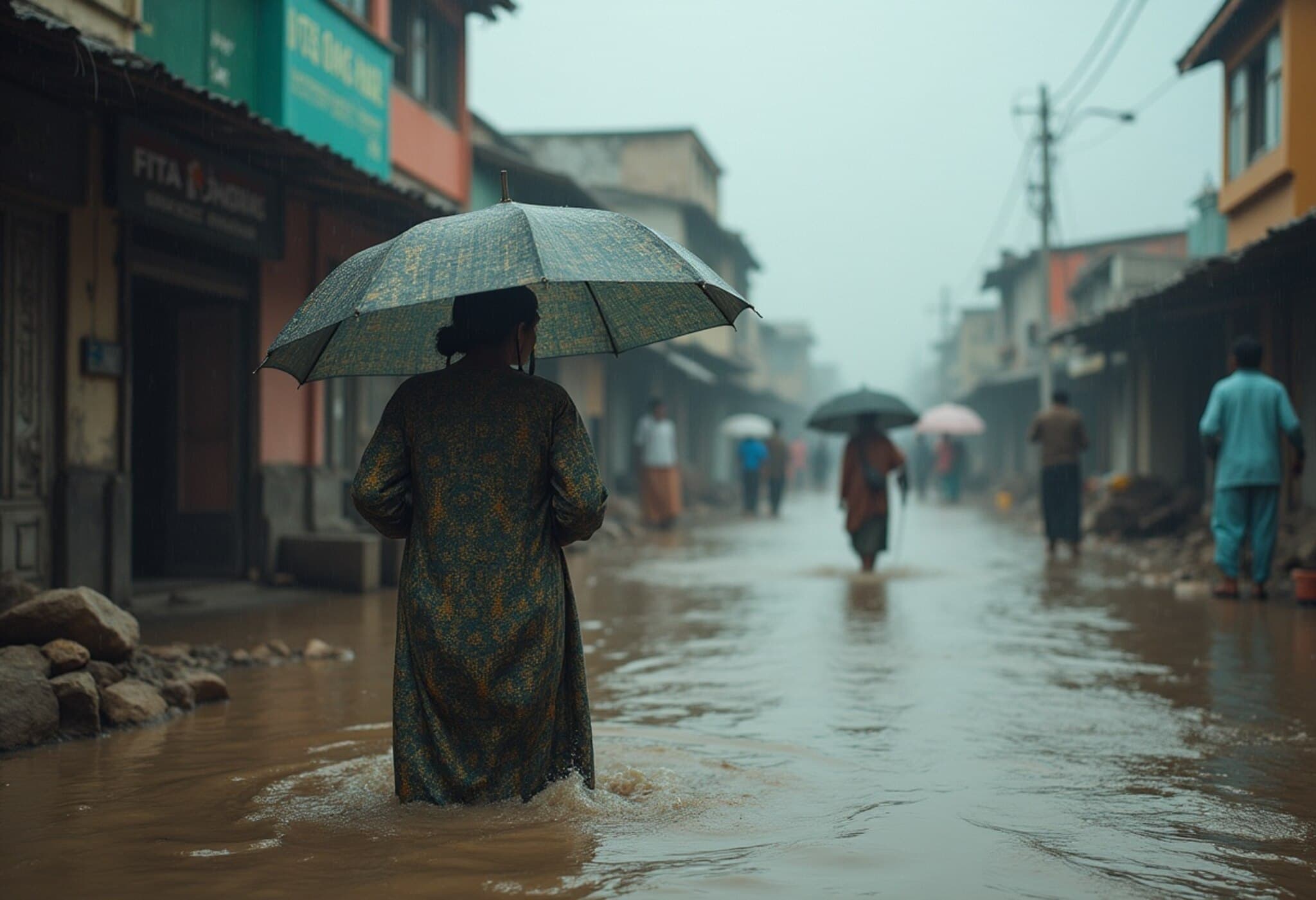Tropical Storm Podul Brings Torrential Rain to Southern China
On Thursday, Tropical Storm Podul unleashed intense rainfall over southern China, compounding the region's struggle with unprecedented deluges earlier this month and ongoing heatwaves in the country’s interior. The fierce storm led to widespread disruptions, shuttering schools, courts, and hospitals, particularly impacting the bustling city of Hong Kong.
Impact on Hong Kong and Surrounding Areas
In Hong Kong, authorities raised the rainstorm alert to the highest "black" warning level, prompting the cancellation of a high-profile court hearing involving media magnate and pro-democracy activist Jimmy Lai. Despite the worsening weather, dedicated supporters gathered under umbrellas outside the courthouse, underscoring the storm's symbolic and practical disruption.
Hospitals announced temporary closures of outpatient clinics, prioritizing patient safety amid the deluge. Meanwhile, airports faced significant challenges, with approximately 20% of flights cancelled across the region, particularly affecting travel hubs in Guangdong, Hunan, and Jiangxi provinces.
Economic Ripple Effects and Flight Cancellations
Quanzhou, a pivotal export center known for textiles, footwear, and apparel, saw over a third of scheduled flights cancelled. This disruption has raised alarms among economic analysts, who highlight the mounting threat extreme weather poses to China’s economic stability—especially as the country is still recovering from last week’s record-breaking precipitation.
Government Response and Preparedness
In response to the ongoing natural calamities, the Chinese government increased disaster relief funding by 430 million yuan (nearly $60 million), bringing total allocations since April to over 5.8 billion yuan. This substantial financial commitment signals Beijing’s intensified efforts to mitigate damage and support affected communities.
Expert Insights: Changing Climate Patterns
Chim Lee, senior analyst at the Economist Intelligence Unit, emphasized a growing trend of more intense and slower-moving tropical cyclones impacting China's southern coastline. “These storms not only cause immediate damage but also disrupt economic activities and infrastructure in key industrial regions,” Lee noted. He pointed out a worrying shift in where cyclones reach peak intensity, echoing concerns that areas previously less vulnerable may now face increasing risk.
Storm's Path and Consequences Across the Region
Podul made landfall in Fujian province shortly after midnight local time, having weakened from a typhoon after battering Taiwan with winds reaching up to 191 kph (118 mph). The storm left one person missing and dozens injured in Taiwan before moving northwestward at 30-35 km/h (19-22 mph), threatening southern China with further heavy rain and flooding.
Guangdong province has been particularly hard hit. Recent downpours saw Guangzhou record an unprecedented 622.6 mm (24.5 inches) of rain over five days—nearly triple the city’s typical August rainfall—resulting in at least seven fatalities and the evacuation of 75,000 residents.
Transport networks have also suffered: highways in Meizhou city were closed due to flooding, and critical high-speed rail lines connecting Shenzhen and Hangzhou were temporarily suspended, highlighting the storm’s extensive regional impact.
Broader Implications and Underreported Concerns
Beyond the immediate disruption and human toll, Podul underscores the escalating economic and infrastructural vulnerabilities China faces amid climate change. The increasing frequency of extreme weather events threatens supply chains, industrial output, and urban resilience—issues that are often overshadowed by casualty figures but are deeply consequential for global markets.
Moreover, the subtle northward shift in cyclone intensity zones raises critical questions about preparedness in areas traditionally considered safe from such events, necessitating a recalibration of disaster risk management strategies.
Editor’s Note
Tropical Storm Podul’s recent ravages are a stark reminder that climate change's fingerprint is becoming impossible to ignore, with severe storms growing stronger and less predictable. While China’s government has ramped up investment in disaster response, questions remain about the sustainability of these measures amid escalating climate risks.
As businesses and residents navigate these challenges, the international community should watch closely how one of the world’s largest economies adapts to an increasingly volatile environment—and what that means for global economic stability. Are current disaster relief efforts sufficient? How will shifting storm patterns affect long-term urban planning in vulnerable regions? The unfolding situation in southern China beckons robust dialogue and innovative policy responses.



















